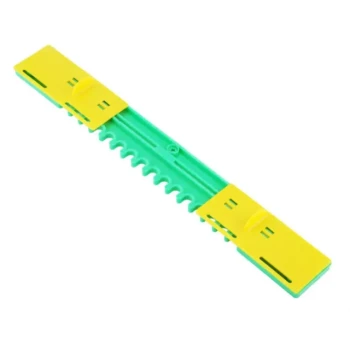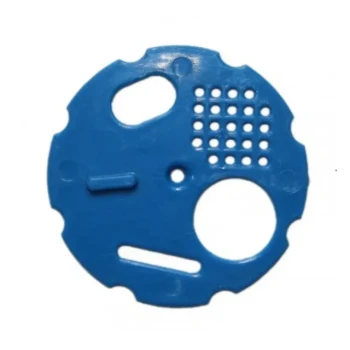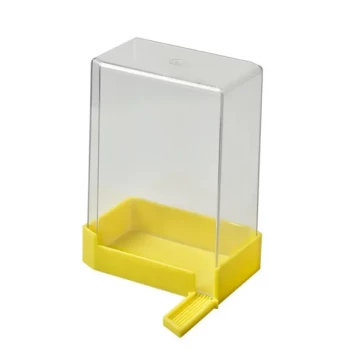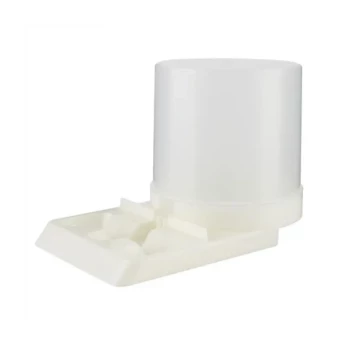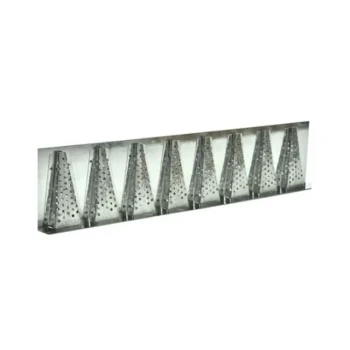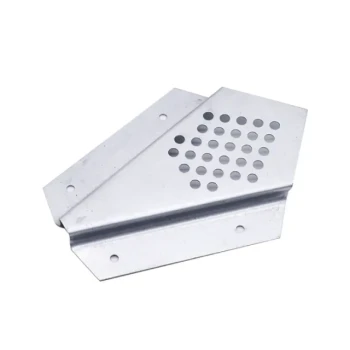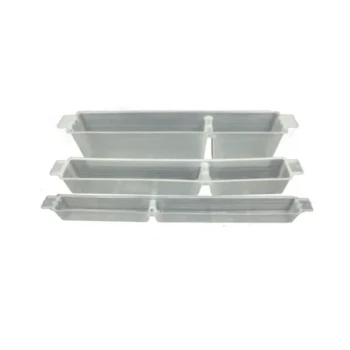To best support your bees, you should adjust a standard Langstroth hive entrance by blocking most of it, leaving an opening of roughly 2-3 inches wide. This creates a defensible entrance of approximately 1.5 to 2.5 square inches, which more closely mimics the small entrances bees select for their nests in the wild.
A standard Langstroth hive entrance is artificially large for the convenience of the beekeeper, not the bees. Reducing the entrance size is a critical adjustment that empowers the colony to better defend itself and regulate its internal climate, directly improving its health and survival prospects.

The Problem with Standard Hive Entrances
The wide, full-width opening at the bottom of a typical Langstroth hive is a significant design flaw when viewed from the bees' perspective. It creates unnecessary stress and vulnerabilities for the colony.
A Security and Defense Liability
A large entrance is an open invitation for predators and robbers. It creates a massive, indefensible front that a colony's guard bees cannot effectively patrol.
This makes the hive vulnerable to robbing from stronger honey bee colonies, as well as attacks from wasps, hornets, and other pests. For a small or developing colony, such an attack can be catastrophic.
A Climate Control Challenge
Bees are masters of thermoregulation, maintaining the brood nest at a stable temperature (around 95°F or 35°C) and specific humidity. A large, open entrance acts like an open door in a house, making this job much harder.
The colony must expend significant energy and resources to counteract heat loss in the winter and manage ventilation in the summer. This wasted energy could have been used for brood rearing, foraging, or honey production.
Replicating the Natural Bee Entrance
In nature, honey bees choose nesting cavities—like hollow trees—that have very small, defensible entrances. Your goal as a beekeeper is to replicate this natural preference.
What Bees Do in the Wild
Wild honey bee colonies almost always select nests with small openings. If the entrance is too large, they will invest considerable time and resources to reduce its size using propolis, a resinous "bee glue" collected from plants.
This instinctive behavior is a clear signal of what bees need: a small, manageable doorway. By providing this for them, you free up their energy for more productive tasks.
The Optimal Dimensions for Health
An entrance of 1.5 to 2.5 square inches strikes the ideal balance. It is large enough to allow for adequate ventilation and busy foraging traffic but small enough for the colony to defend effectively.
For a standard ¾ inch high Langstroth entrance, this translates to an opening that is 2 to 3 inches wide.
How to Use an Entrance Reducer
The most common method for adjusting the entrance is using a simple wooden cleat called an entrance reducer. These often come with new hives and have different-sized notches.
You can also use any block of wood, foam, or even rocks to close off the majority of the entrance, leaving only the desired opening. Ensure it fits snugly to prevent pests from squeezing through the gaps.
Understanding the Seasonal Trade-offs
A single entrance size is not always optimal year-round. A skilled beekeeper adjusts the entrance based on the season and the specific strength of the colony.
Critical for New or Weak Colonies
For a newly installed package, a nucleus colony (nuc), or any hive that is struggling, the smallest possible entrance (around 1 inch) is non-negotiable. Their low population makes them extremely vulnerable, and a small entrance is their primary line of defense.
Managing a Strong Summer Hive
During a heavy nectar flow, a very strong colony may experience "bearding" or traffic jams at a small entrance. In this specific case, you can consider a moderately larger opening (4-5 inches) to improve foraging efficiency.
However, you must monitor the hive closely for any signs of robbing. If robbing pressure is high in your area, it's often safer to maintain the smaller entrance.
Preparing for Winter Survival
As fall approaches, it is crucial to reduce the entrance back to its smallest setting (2-3 inches). This helps the bees conserve heat throughout the winter.
It is also essential to use a mouse guard—a metal reducer with holes large enough for bees but too small for mice. Mice seeking warmth can easily destroy a dormant colony if they gain access.
Making the Right Choice for Your Colony
Managing the entrance is one of the most impactful and simple ways to support your bees' natural instincts and improve their chances of thriving.
- If you are installing a new package or nuc: Use the smallest possible entrance (1-2 inches) to provide maximum protection while the colony establishes itself.
- If your colony is strong during a heavy nectar flow: You may temporarily widen the entrance to 4-5 inches to reduce congestion, but revert to a smaller size if you see any fighting.
- If you are preparing for winter: Reduce the entrance to its smallest defensible size (2-3 inches) and install a mouse guard to protect the dormant cluster.
Ultimately, a well-managed entrance helps your bees focus their energy on what they do best: building a strong, healthy, and productive colony.
Summary Table:
| Situation | Recommended Entrance Width | Key Benefit |
|---|---|---|
| New/Weak Colony | 1-2 inches | Maximum protection while establishing |
| Standard Healthy Hive | 2-3 inches | Ideal balance of defense and ventilation |
| Strong Hive (Heavy Flow) | 4-5 inches (temporary) | Reduces foraging traffic congestion |
| Winter Preparation | 2-3 inches + Mouse Guard | Conserves heat, prevents pest intrusion |
Equip your apiary for success with HONESTBEE.
By adjusting your hive entrances, you're taking a critical step toward supporting your bees' natural instincts. Ensure you have the right tools for the job, like durable entrance reducers and mouse guards, to make these adjustments simple and effective.
HONESTBEE supplies commercial apiaries and beekeeping equipment distributors with the high-quality, wholesale-focused supplies needed to manage healthy, productive colonies. Let us help you build a more resilient operation.
Contact HONESTBEE today to discuss your equipment needs and wholesale pricing.
Visual Guide
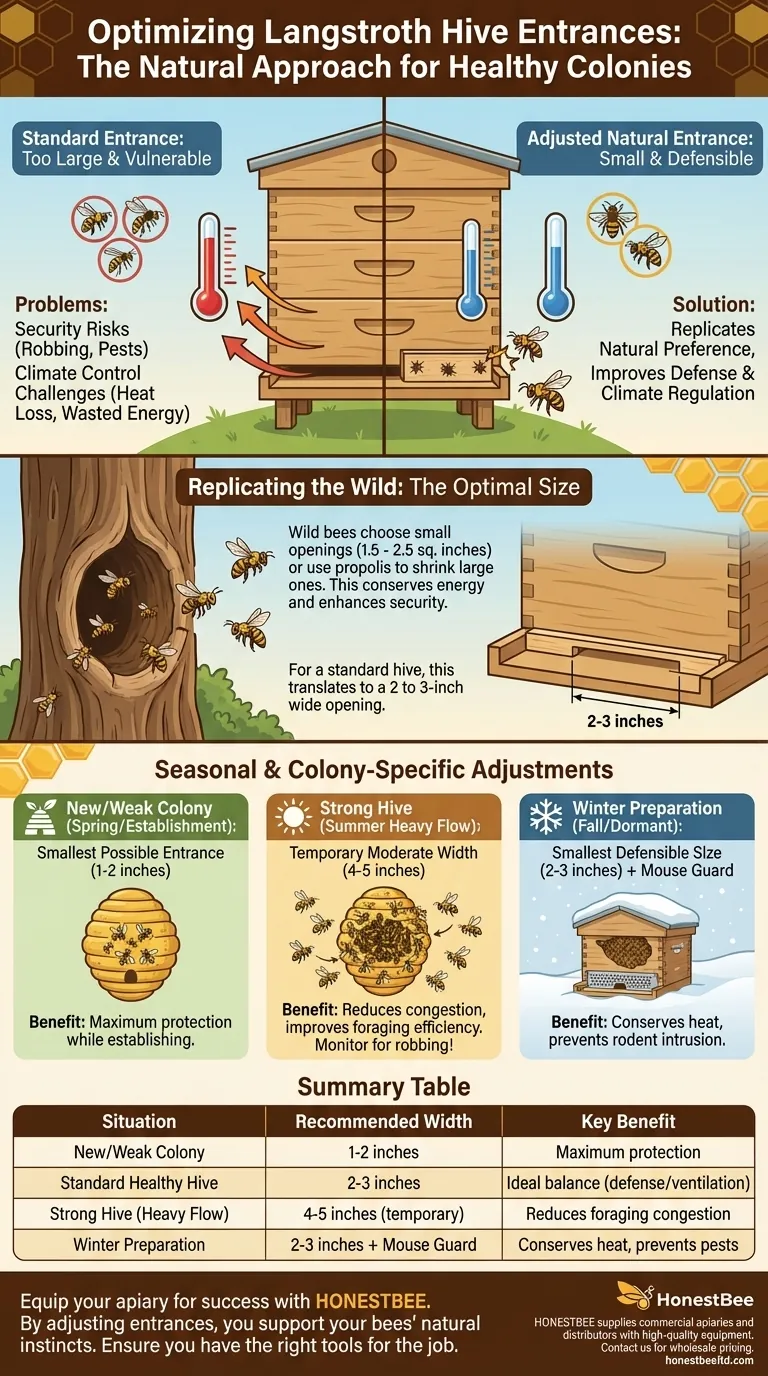
Related Products
- Beehive Entrance Reducer Guardian Metal Hive Entrance for Bees
- Multi-Functional Sliding Hive Entrance for Beekeeping
- Steel Round Disc Entrance Reducer for Flexzion Bee Hive Nuc Box Gate
- Multi-Functional Rotary Hive Entrance Disc for Beekeeping
- Professional Hive Front Entrance Bee Feeder
People Also Ask
- What is the purpose of placing an object in front of the hive entrance after a move? A Guide to Forced Reorientation
- What are the different entrance sizes for an 8 or 10-frame Langstroth hive? A Guide to Seasonal Management
- What are the two functions of the Entrance Reducer? Master Hive Defense and Safe Transport
- What should be done after transferring frames to the new hive? Essential Steps for a Secure Colony
- How big should a beehive entrance be? Optimize for Colony Health & Honey Production

